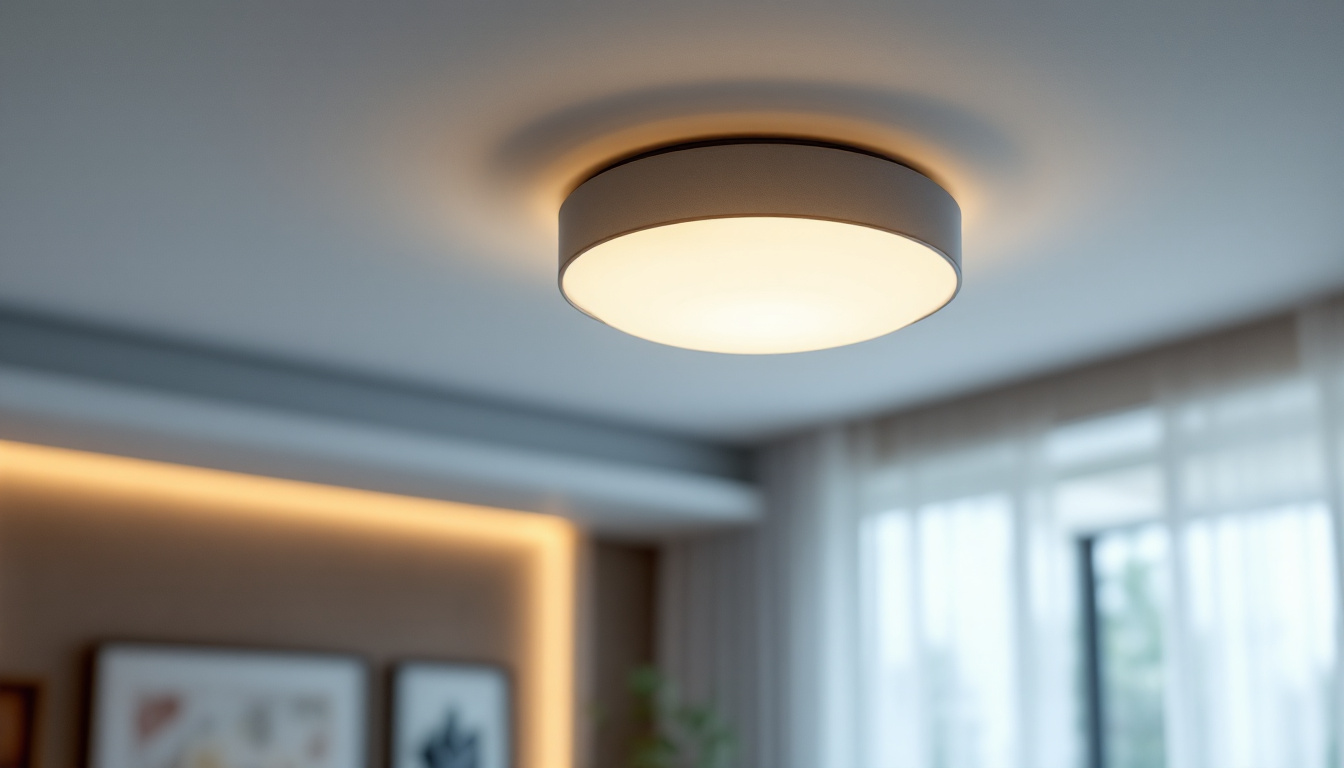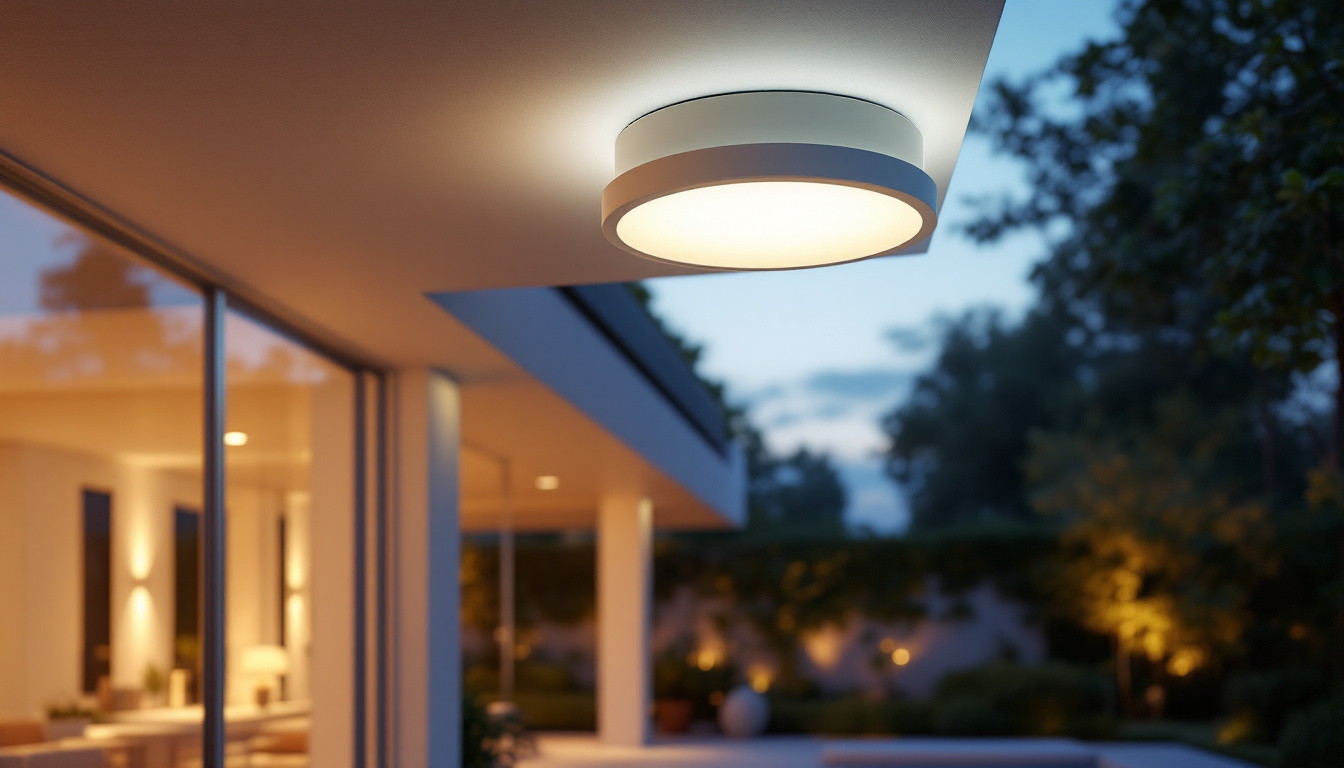

In the realm of interior lighting, flush ceiling lights stand out as a versatile and practical choice for many spaces. Whether illuminating a cozy living room or brightening up a commercial office, these fixtures offer a sleek, unobtrusive design that complements various decor styles. For lighting contractors, understanding the nuances of selecting the right flush ceiling lights is essential to delivering quality results that meet client expectations.
Flush ceiling lights are designed to sit snugly against the ceiling, providing a clean and streamlined appearance. Unlike pendant or chandelier lights, which hang down and can dominate a room’s aesthetic, flush mounts offer a more subtle approach to lighting. This makes them ideal for spaces with low ceilings or where a minimalist design is desired. Furthermore, their low-profile nature allows for the efficient use of space, making them a practical choice for both small and large rooms alike.
In addition to their aesthetic benefits, flush ceiling lights can also enhance the functionality of a room. By providing a uniform distribution of light, they help eliminate dark corners and shadows, making spaces feel more open and inviting. This is particularly beneficial in areas where tasks are performed, such as kitchens and workspaces, where adequate lighting is crucial for safety and efficiency.
There are several types of flush ceiling lights available, each with its unique characteristics and applications. The most common types include:
Moreover, flush ceiling lights can also be found in a range of materials, from sleek metals to warm woods, allowing homeowners to choose fixtures that complement their existing decor. Some models even feature adjustable brightness settings or color temperature controls, enabling users to customize the ambiance of their space according to their needs. This adaptability makes them suitable for various design themes, from contemporary to traditional.
Flush ceiling lights are incredibly versatile and can be used in a variety of settings. They are commonly found in:
In addition to these common applications, flush ceiling lights can also be effectively used in outdoor settings, such as covered patios or porches, where they can provide necessary illumination while maintaining a cohesive look with the indoor lighting. Their durability and weather-resistant options make them suitable for various climates, ensuring that outdoor spaces remain functional and inviting after sunset. Furthermore, their sleek design can enhance the overall aesthetic of outdoor areas, blending seamlessly with landscaping and architectural features.
When selecting flush ceiling lights, several factors must be taken into account to ensure the chosen fixtures meet both aesthetic and functional requirements.
The size of the flush ceiling light should be proportionate to the room in which it will be installed. A large fixture in a small room can overwhelm the space, while a small light in a large room may not provide adequate illumination. Consider the dimensions of the room and the height of the ceiling when making a selection. Additionally, it’s essential to think about the layout of the room and how the light will interact with other elements, such as furniture and architectural features. For example, if the room has a low ceiling, opting for a slimmer profile light can create an illusion of height, while a larger fixture can serve as a statement piece in a spacious area.
Flush ceiling lights come in a myriad of styles, from modern and sleek to traditional and ornate. The design should complement the existing decor of the space. For instance, a contemporary home may benefit from a minimalist LED flush mount, while a classic interior might be better suited to a drum-style fixture with decorative elements. Furthermore, consider the materials used in the light fixture; metal finishes like brushed nickel or matte black can add a modern touch, while glass or crystal accents can enhance elegance and sophistication. Don’t forget to think about the color temperature of the bulbs as well, as warmer tones can create a cozy atmosphere, while cooler tones are ideal for task-oriented spaces like kitchens or work areas.
Another critical aspect to consider is the light output and energy efficiency of the chosen fixtures. The brightness of a flush ceiling light is measured in lumens, and selecting a light with the appropriate lumen output is essential for achieving the desired ambiance. A well-lit room can enhance productivity, create a welcoming atmosphere, and even influence mood. Therefore, understanding the relationship between lumens and the size of the space is vital; larger rooms may require higher lumen outputs to ensure even lighting, while smaller spaces can achieve the desired effect with fewer lumens.
Flush ceiling lights can accommodate various types of bulbs, including incandescent, fluorescent, and LED. Each type has its advantages and disadvantages:
The color temperature of a light bulb can significantly affect the mood of a space. Measured in Kelvin (K), the color temperature can range from warm (around 2700K) to cool (above 5000K). For residential applications, warm light is typically preferred, while cooler temperatures may be more suitable for workspaces. It’s also worth noting that the color rendering index (CRI) of a bulb plays a crucial role in how colors appear under its light. A higher CRI indicates that colors will appear more vibrant and true to life, which can be particularly important in areas like kitchens and art studios where accurate color perception is essential.
Proper installation is crucial for the performance and safety of flush ceiling lights. Lighting contractors must ensure that the fixtures are installed securely and in compliance with local building codes.
Before installation, it is essential to assess the electrical requirements of the chosen flush ceiling light. Check the wattage and voltage specifications to ensure compatibility with existing wiring. Additionally, consider the placement of the fixture to maximize light distribution throughout the room.
Flush ceiling lights can be mounted directly to the ceiling or may require a mounting bracket. Understanding the specific mounting requirements of the chosen fixture is vital for a successful installation. Ensure that all necessary hardware is included and that the installation process is straightforward.
Flush ceiling lights should be easy to maintain, as they are often installed in high-traffic areas. Selecting fixtures made from durable materials can enhance longevity and reduce the frequency of replacements.
Regular cleaning is essential to maintain the appearance and functionality of flush ceiling lights. Dust and grime can accumulate over time, diminishing light output. Depending on the material, cleaning methods may vary. For glass fixtures, a gentle glass cleaner and soft cloth are typically sufficient, while fabric shades may require a more delicate approach.
When selecting flush ceiling lights, consider the manufacturer’s warranty and the expected lifespan of the fixture. Quality products often come with warranties that reflect their durability, providing peace of mind for both contractors and clients.
The world of lighting design is constantly evolving, and flush ceiling lights are no exception. Staying informed about current trends can help lighting contractors make informed decisions that resonate with clients.
With the rise of smart home technology, many flush ceiling lights now come equipped with smart features. These include adjustable brightness, color temperature control, and remote operation via smartphone apps. Integrating smart lighting can enhance the functionality of flush ceiling lights and appeal to tech-savvy clients.
As sustainability becomes a priority for many homeowners and businesses, eco-friendly lighting options are gaining popularity. Look for flush ceiling lights made from sustainable materials or those that utilize energy-efficient technologies. This not only benefits the environment but also attracts clients who value green practices.
Choosing the right flush ceiling lights is a multifaceted process that requires careful consideration of various factors, including size, style, light output, and installation requirements. By understanding the nuances of these fixtures, lighting contractors can provide valuable guidance to clients, ensuring that the selected lighting solutions enhance both the functionality and aesthetics of any space.
As trends continue to evolve, staying informed about the latest innovations and preferences in flush ceiling lighting will empower contractors to deliver exceptional results. Whether working on residential or commercial projects, the right flush ceiling lights can transform a space, providing both illumination and style.
Ready to elevate your lighting projects with the right flush ceiling lights? At LumenWholesale, we offer an extensive selection of spec-grade lighting products that combine quality, affordability, and convenience. Say goodbye to inflated markups and hello to top-quality lighting at unbeatable wholesale prices. With free shipping on bulk orders, you can trust that you’re getting the best value without any hidden fees. Enhance the functionality and aesthetics of your spaces with reliable, high-performance lighting from LumenWholesale. Wholesale Lighting at the Best Value is just a click away.

Discover essential compliance guidelines and expert insights for lighting contractors working with outdoor sensor lights.

Discover expert tips and insights for lighting contractors on selecting and installing outdoor ceiling light fixtures.

Discover how LED workplace lighting is revolutionizing the lighting industry with its energy efficiency, cost-effectiveness, and enhanced work environment benefits.

Discover essential insights into troffer lights with our comprehensive guide tailored for lighting contractors.
Get notified when NEW deals are released.
Optimize your budget with wholesale discounts.
Only top-quality, specification-grade lighting products.
No additional costs at checkout - what you see is what you pay.
We understand the unique needs of contractors.